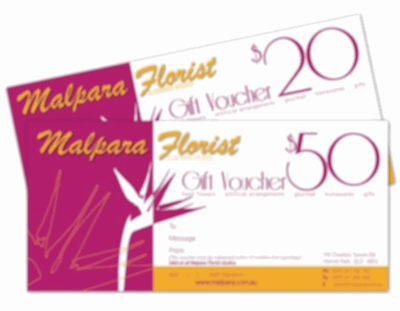

Use our online designer studio to create your own personalised flyers, business cards, greeting cards and more.
Order NowWhen it comes to professional printing and advice on your business marketing, we are the team to call! You can call us direct on 04 568 8773 or fill in our quote form.
Request a Quote
Gift vouchers are a different kettle of fish to your normal flyer or stationery because they are usually a form of legal tender for your business. People are going to pay you money for a product or service that will be redeemed later, so there are a lot of things you have to consider so that both the user of the voucher and you get a fair deal. I’m not going to talk about graphic design or selling features, more what you need to so to make sure that there are no problems when a client uses them.
Fixed value (dollar notes) are good for where you want to give out vouchers at an event or you want to keep things simple. The down side is that you may need to have several denominations of vouchers ($10, $20, $50) and give out multiples when a amount is bought that doesn’t match the value of one voucher. Flexible is just that, you write down the amount the voucher is for on the voucher. You do need to do more bookkeeping as you have to match up vouchers to amounts on a record so you know someone hasn’t altered it to make it more valuable or reused it. This is where serial numbers are useful.
As a rule of thumb, I would recommend putting serial numbers on vouchers. For us at Copy Express to add serial numbers is a minimal addition to the normal voucher setup cost. Serial numbers on the voucher not only allow you to ensure that the voucher is being redeemed for the value it was bought for – they also allow you to track life cycle of the voucher from purchase to use and what items they are being used for, which is useful information in tracking the performance of the business. Serial numbers also are another form of security as you have a log of the voucher purchase in case of a stolen one being redeemed.
There are no real rules for gift vouchers, you can have them as small as a business card or as big as an A0. In practical terms, I generally recommend that the vouchers are flat-in-a-envelope sizing, that is that you can slip inside an envelope. This means that you follow A6, A5 or DL sizing, though I’ve also found vouchers in the sizes of the common $5, $10, $20 notes work too. The style is flexible to, though greeting cards, note style, and cheque book format (with a stapled tab to record information on) are the standard ones. Single or double sized, and any paper weight (over 150gsm works well) are totally up to you and the image you want to present.
Speaking of envelopes, why not give the vouchers in a branded envelope for an extra bit of class. It doesn’t have to be a generic postal envelope either, we can cut and crease card to make all kinds of sizes and you can attach the voucher inside with a removable gum dot, which we also sell.
This is the big one, the rules of how the voucher can be used. These limitations are there to prevent abuse of the gift voucher and also that the customer has a fair deal too. At a minimum you should include a statement to the effect that “Subject to our standard Terms and Conditions available in store or on our website” (and make sure that they are actually available), or list some of the key ones (such as limitations and expiry dates). For more details on T&Cs check out our main Gift Voucher article.
Gift vouchers are a form of tender in your business, so it can be just as much a target of theft as cash or any item on a shelf. There are a few simple steps of preventing theft and duplication. I’ve already talked about serial numbers, so here are some other ways help increase the security of your gift vouchers:
Accurate recording of the voucher’s life cycle is important too, not just the value and when, but who sold it, who bought with their contact details, and who it is being given too. When the voucher is being redeemed, then note down who’s the redeemer and their contact details too as secondary check. These details also give you important information of two clients you can market too. Doing a regular check of what vouchers you have outstanding is a good way of keeping track of them and a reminder to contact clients who haven’t used them yet. Sure you don’t have to follow them up as it’s up to them to redeem before they expire, but doing so not only makes sure they get used but makes you look great in the eyes of the customer which all important these days. Finally, while such things as embossing and foiling are the domain of offset printers, just getting us at Copy Express to make the vouchers means that the vouchers are made with materials and finishes not available to the average consumer so making it very hard to fake or alter.
As I’ve covered in Improve your cash flow with Gift Vouchers , vouchers can be more than just a device to get money. With careful planning and use, they are powerful tool to market yourself and maintain contact with your customers.